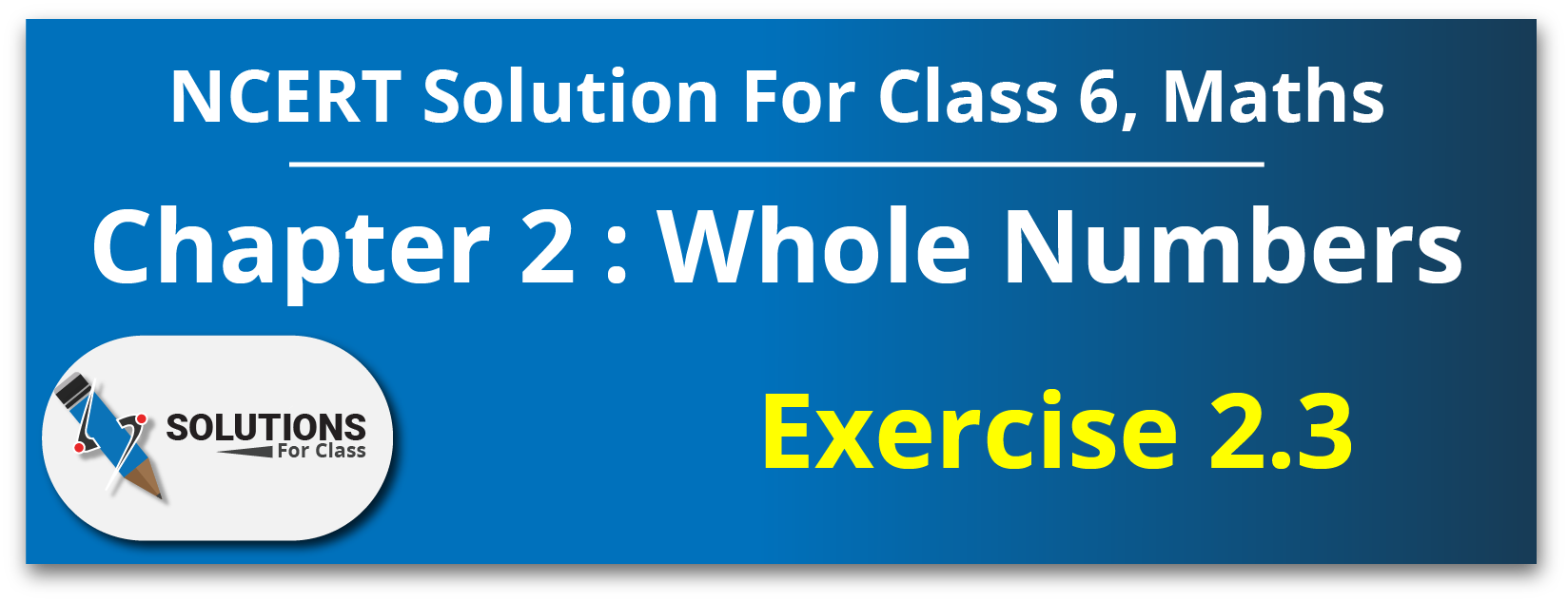
Table of Contents
ToggleNCERT Solutions for Class 6 Maths, chapter 2, Whole Numbers, Exercise 2.3
Q.1.Which of the following will not represent zero:
$\begin{align}
& (a)\,\,1+0 \\
& (b)\,\,0\times 0 \\
& (c)\,\,\frac{0}{2} \\
& (d)\,\,\frac{10-10}{2} \\
\end{align}$
Ans: (a) 1 + 0 = 1
Hence, it will not represent zero
(b) 0 × 0 = 0
Hence, it will represent zero
(c) 0 / 2 = 0
Hence, it will represent zero
(d) (10 – 10) /2= 0/2 = 0
Hence, it represents zero
Q.2. If the product of two whole numbers is zero, can we say that one or both of them will be zero? Justify through examples.
Ans: Yes, if we multiply any number with zero the resultant product will always be zero.
Example: 0 × 5 = 0 and 599 × 0 = 0
if both numbers are zero, then the result also be zero.
Example: 0 × 0 = 0
Yes, if the product of two whole numbers is zero, then both of them will be zero
Q.3. If the product of two whole numbers is 1, can we say that one or both of them will be 1? Justify through examples.
Ans: If the product of two whole numbers is 1, both the numbers should be equal to 1
Example: 1 × 1 = 1 But 1 × 9 = 9
Hence, it’s clear that If both numbers are 1, then the product is 1.
Q.4. Find using distributive property:
(a) 728 × 101
(b) 5437 × 1001
(c) 824 × 25
(d) 4275 × 125
(e) 504 × 35
Ans:
(a) 728 × 101
= 728 × (100 + 1)
= (728 × 100) + (728 × 1)
= 72800 + 728
= 73528
(b) 5437 × 1001
= 5437 × (1000 + 1)
= (5437 × 1000) + (5437 × 1)
= 5437000 + 5437
= 5442437
(c) 824 × 25
= (800 + 24) × 25
= (800 + 25 – 1) × 25
= (800 × 25) + (25 × 25) – (1 × 25)
= 20000 + 625 – 25
= 20000 + 600
= 20600
(d) 4275 × 125
= (4000 + 200 + 100 – 25) × 125
= (4000 × 125) + (200 × 125) + (100 × 125) – (25 × 125)
= 500000 + 25000 + 12500 – 3125
= 534375
(e) 504 × 35
= (500 + 4) × 35
= (500 × 35) + (4 × 35)
= 17500 + 140
= 17640
Q.5. Study the pattern :
1 × 8 + 1 = 9 ;
12 × 8 + 2 = 98;
123 × 8 + 3 = 987;
1234 × 8 + 4 = 9876 ;
12345 × 8 + 5 = 98765;
Write the next two steps. Can you say how the pattern works?
Ans:



